The American Razer has accustomed us to many types of products for the IT world, especially in the videogame and lifestyle sectors, which we often report on these pages. Recently, however, the Irvine-based company presented a product that is different from the others, at least at first glance. These are the Anzu Smart Glasses.
The name must not deceive: the glasses are not used for augmented reality and do not even have particularly revolutionary technologies (no transmission of sound via bone, for example) but they have clear characteristics: protect the eyesight at home, in front of the computer, and outside, in the sun, thanks to the interchangeable lenses that can also accept graduated and polarized lenses. And avoid the trouble of putting on and taking off headphones and earphones, thanks to the bluetooth connection that hooks any device (from the MacBook Pro to the Apple TV through iPhone and iPad, in our test) and to the touch surface on the side arms, programmable via the '' special app for iOS and Android.
We put these glasses to the test with a bit of skepticism, but in the weeks of use they entered our daily routine with humility and determination, as we will see in a moment. And now we can say that we delayed the time to “close” the test to return the glasses as much as possible, knowing that we would no longer be able to put them on in the morning for a long day of videoconferencing and articles to write. Difficult to do without.
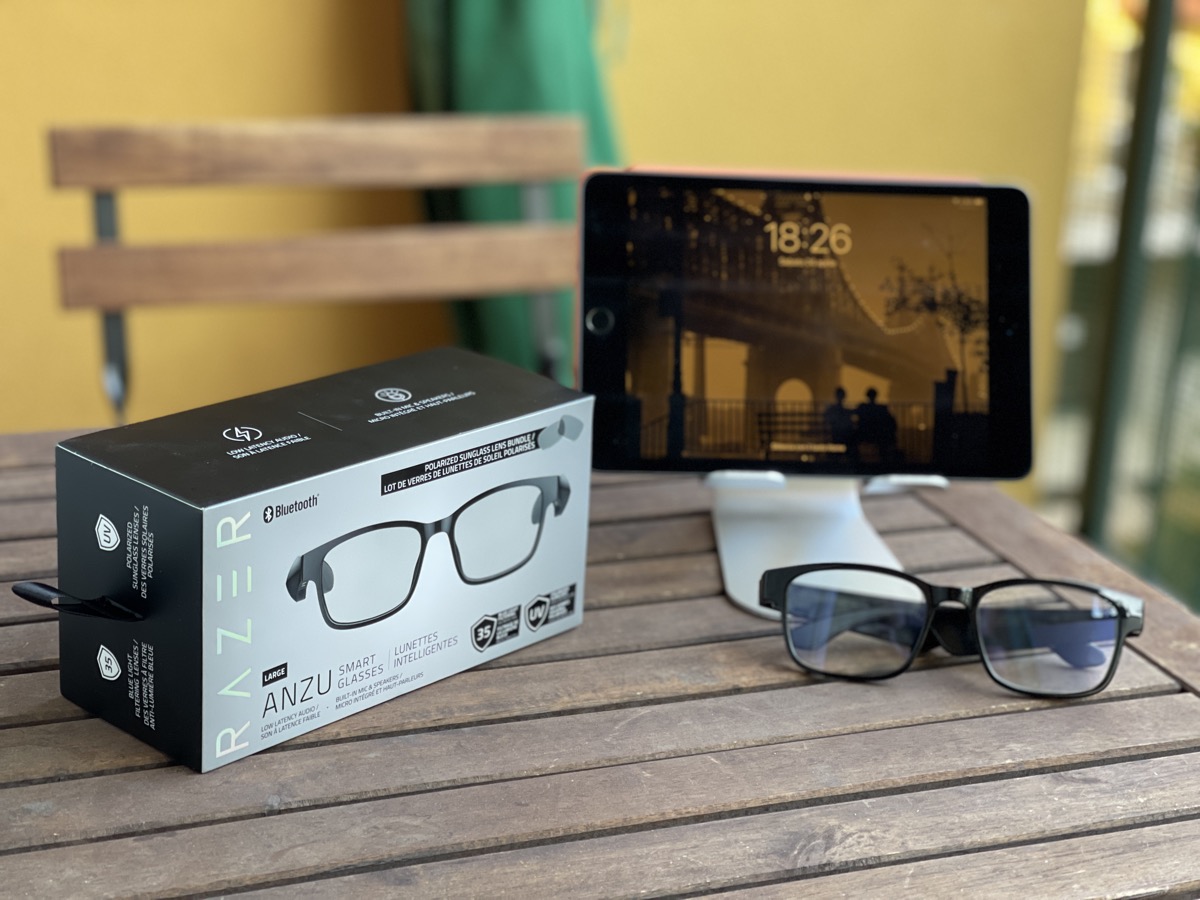
The price is in line with the quality, that is, we are at levels of normal “beautiful” frames for glasses: 200 euros for the product, with another 35 for having polarized lenses. But let's go in order.
How they are made
The package is very simple: a cardboard parallelepiped-shaped box that contains a two-story stage (the version with also polarized lenses). We tried the square version (for more masculine visas) large format. Razer offers two versions (square and oval) in two sizes, and this, the company assures, satisfies all possible face types. We can confirm that, at least in our case, the wide model fits perfectly on a face for which sunglasses (the writer does not wear eyeglasses) usually require the test of different versions and sizes before finding the square.
In the box, together with the second package with polarized lenses that replace the standard ones by pressing with an easy move clearly indicated in the instructions, there is also a very nice leather glasses holder that also contains space for the USB cable for the recharge. In addition, there are of course also the glasses, which are at first glance very pleasant and, after a few weeks of use, have not yet tired of wearing them or looking at them. The “Razer” writing on the temples is discreet and the glasses somehow “get lost” thanks to a much appreciated non-boisterous design.
The glasses are bluetooth, have two small speakers on the temples, two 360-degree low-latency microphones, and two side touch surfaces on the temples, programmable for different touches from the app.
Transparent lenses filter 35% of blue light (that of the monitor, so to speak) while polarized lenses block 99% of UV rays. The driver of the audio part is 16mm while the Bluetooth has a latency of 60 ms. The weight is 48 grams (they are light) for the trial version, which is the largest, the minimum is 43 grams.
The batteries, one for each temple, have an autonomy of 2 weeks in stand-by and more than 5 hours of actual use. In addition, the glasses are IPX4 certified for resistance to dust and water.
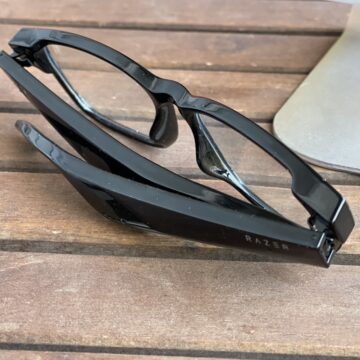
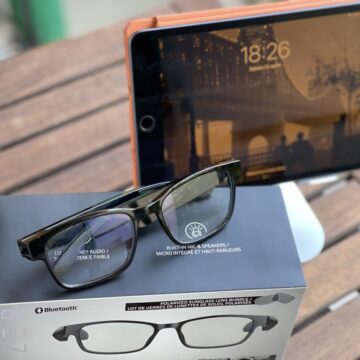
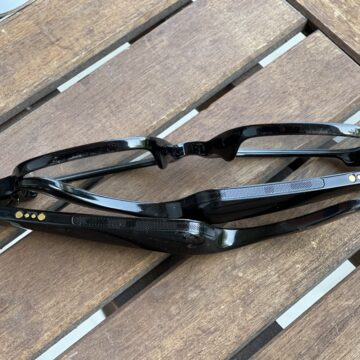
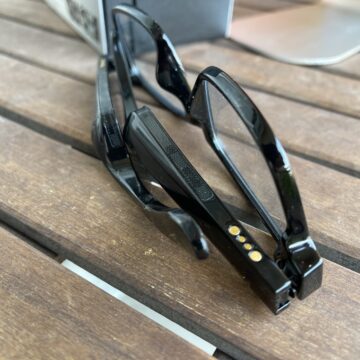
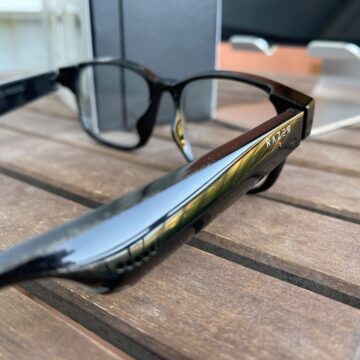
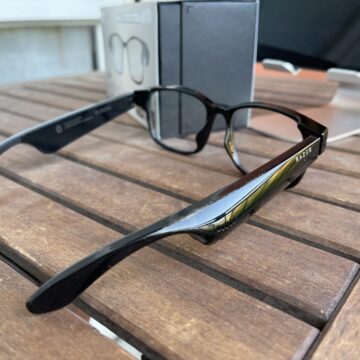
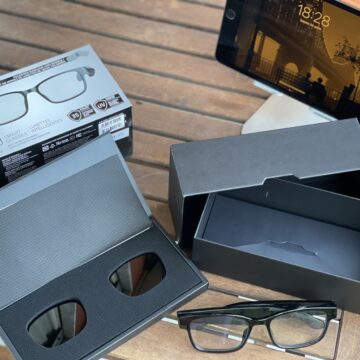
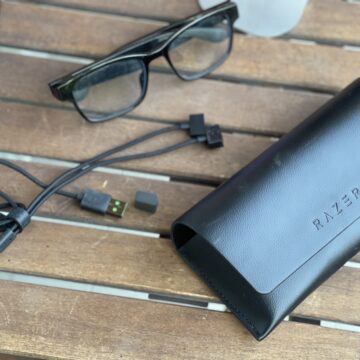
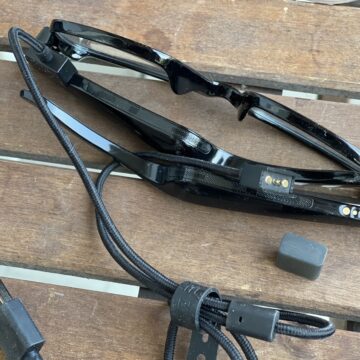
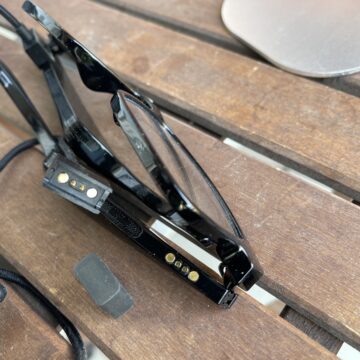
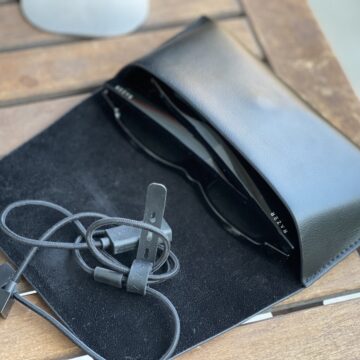
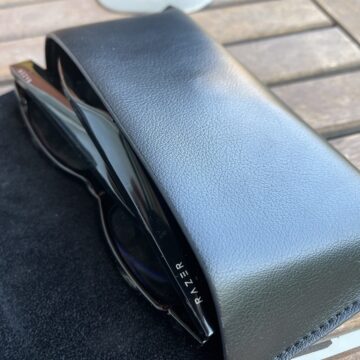
Connect the glasses and away
Using the glasses is very simple. They light up when the temples are opened and put on, otherwise they go to stand-by mode. When they are closed, they turn off.
When they are turned on, they connect to the last bluetooth device they are connected to. Using an iPhone 12 Pro Max, an iPad mini V, an iPad Pro 12.9 2020, a Mac mini M1 and a MacBook Pro 16 in order, the glasses have all the times simply needed to be unhooked from the previous device and hooked up to the new one. In case of an attempt to dock using the remembered position for example on the Mac mini when they are already docked to the iPhone, the procedure is almost never successful.
The operation of the glasses is very simple: they can be used to answer a phone call or close it (but also with audio and video chats) using the touch control area on the sides of the arms. Be careful not to touch it unintentionally to fix your glasses because you would end the phone call.
While our audio is collected by the omnidirectional microphones, the voice of our interlocutors (or any other sound) comes constant from the two speakers “hidden” in the arms, with 16 mm drivers that “shoot” downwards and backwards, that is in the direction of our ears, with good results. Attention, no bone conduction of sound or other devilry: those around you hear very well (even if a little muffled and distorted from the distance) what you hear too. In practice, it is a well-calibrated double speakerphone, but which does not have a privacy effect.
When you close your glasses and put them away, the bluetooth turns off. It is not possible to keep them open and turned off at the same time, unless the battery has run out. In our tests it never happened.
There is no wall charger. There is only, as mentioned, a sturdy cable with an old type A Usb, to be attached to the computer or to our charger. The temple tips (both have to be charged) have magnets to snap onto, which look symmetrical but actually have a direction. Not bad because the magnet has a well oriented polarity and “refuses” to hook them upside down (preserving them, we imagine, from the risk of a short circuit).
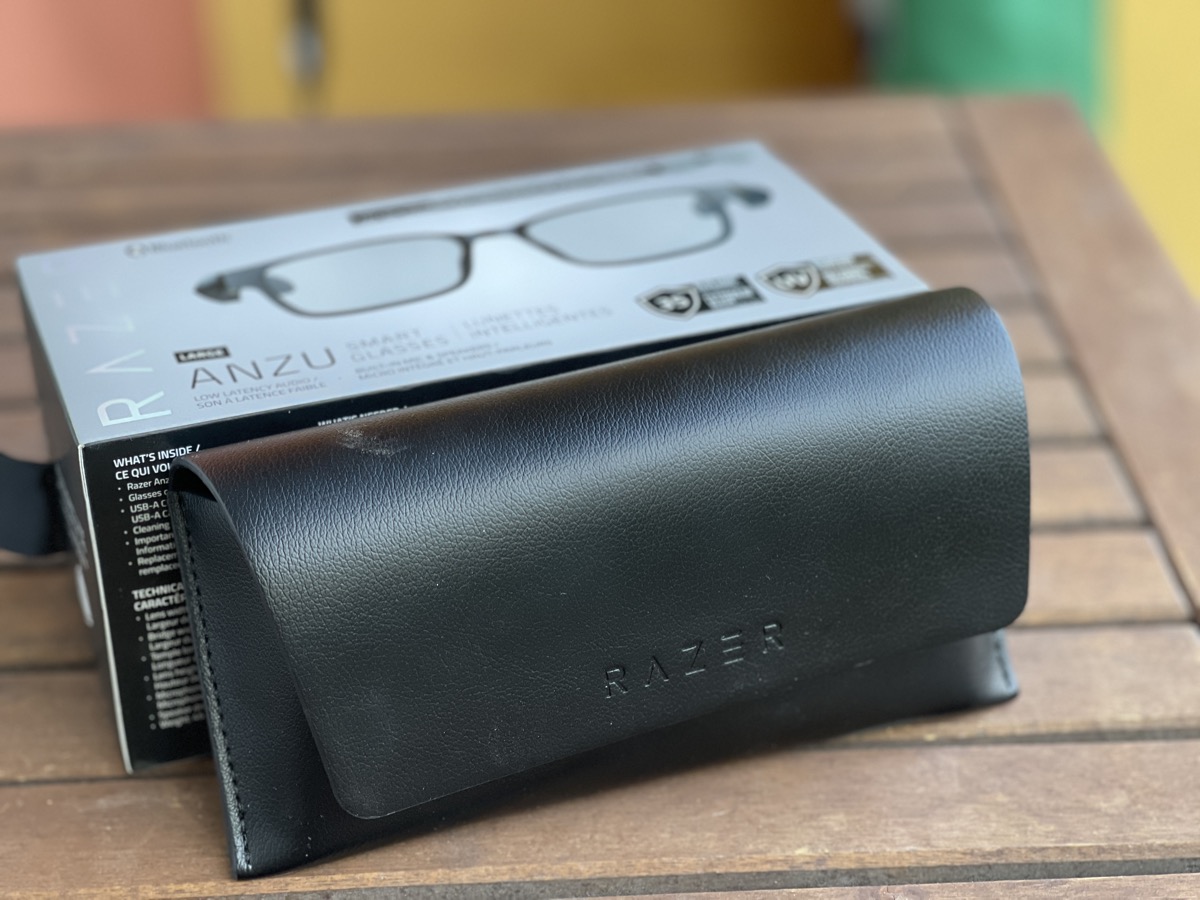
Field test
As we said at the beginning, we approached these glasses with a certain skepticism because the writer does not wear them and does not feel the need. And obviously this is nothing comparable to the futuristic augmented reality glasses that are being talked about so much in recent months (also about Apple). In short, we imagined to use them only with polarized lenses, in the few moments in which it is possible to go outside during the lockdown, and instead it happened exactly the opposite.
The glasses immediately impressed with the convenience in the home. Pairing with the device you want to use is fast even if there is the inconvenience that, since it is not a product equipped with Apple's proprietary chip and shared for example by the various generations of AirPods, the pairing does not automatically switch from one device to another. 'other. However, it is a small thing.
Instead, we quickly realized that they cannot be used outdoors, because the speakers in the rods are practically a kind of perennial speakerphone. Perfect for home or for situations of isolation, uncomfortable outdoors, on public transport, in work situations in shared space.
Here the problems end and instead the satisfactions begin. As mentioned, the glasses are very light, they can be worn all day without problems. The lenses relax the eyes and we noticed, after the first ten days of use in the normal routine of work in lockdown in front of the computer for several hours a day, a pleasant decrease in the constant redness generated by the fatigue of using the computer.
The best effect is with video conferencing. The numerous calls and online lessons, seminars, meetings and all kinds of interactions, both video and audio only, and which are a source of tiredness for both sight and hearing, are completely remodeled. It's more relaxing to have glasses on and have to keep the headphones on for hours in a row. The battery has never given problems, easily exceeding the five hours indicated by the package. And we know this for sure because the writer held a writing workshop with sessions of four and a half hours in the morning, plus a couple of video calls of half an hour in the afternoon, totaling at least five and a half hours of use of the instrument over the period. of the day.
The battery life, as well as the adjustment of the touch settings and the frequency equalization of the small speakers can only be done from the app, which also has a small tutorial that is not particularly convincing.
From an aesthetic point of view, at least on the speaker's face, the glasses have not generated any kind of alarm: they are sober and classic, the chat interlocutors have not expressed any perplexity.
We also used the glasses to follow some evening shows on Apple TV + using the Bluetooth connection possible with Apple TV to avoid bothering the other inhabitants of the house and everything went well. The sound is not revolutionary but it is rich, stable and “full”. Above all, it has a good spatiality: after a while it becomes perfectly normal to perceive it as if it came from all sides.
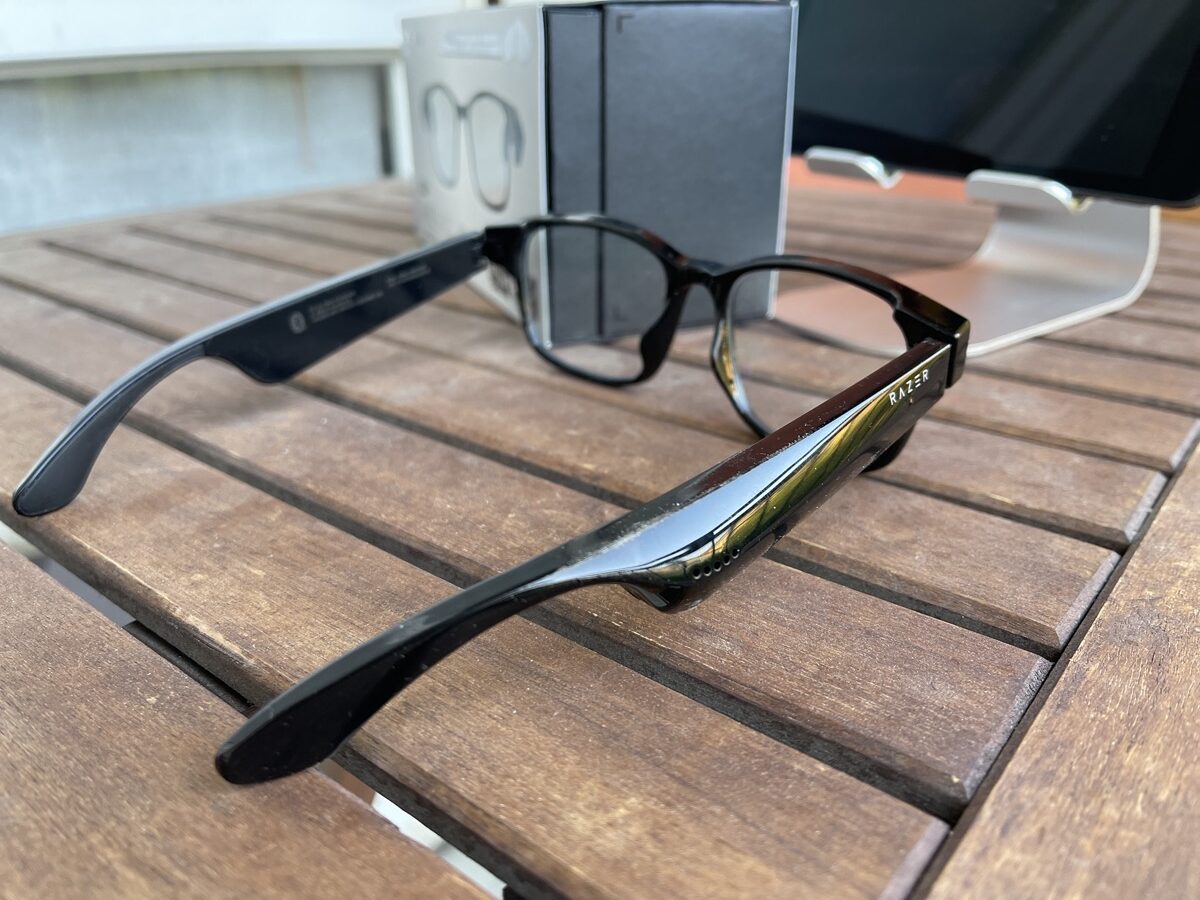
Conclusions
These Anzu glasses from Razer are not a gadget. They are real glasses, comfortable to wear, made with quality plastic materials, elegant, flexible as regards the possibility of using other lenses, and with a very good quality of the bluetooth connection and audio.
They do not have a particularly innovative sound reproduction technology and for this reason it does not make much sense to use them outdoors, on pain of being heard by nearby people. Instead, at home or at work (alone), they are perfect. They also have good applications for gamers and for those who want to enjoy a movie without making too much noise.
Above all, the 30% protection from blue lights serves to make the glasses discreet (the lenses are perfectly transparent, not yellowish) and functional to reduce visual stress.
Pro
Cons
Price
209 euros for glasses, another 35 for polarized lenses. For the moment they can only be purchased on Razer e-commerce.





